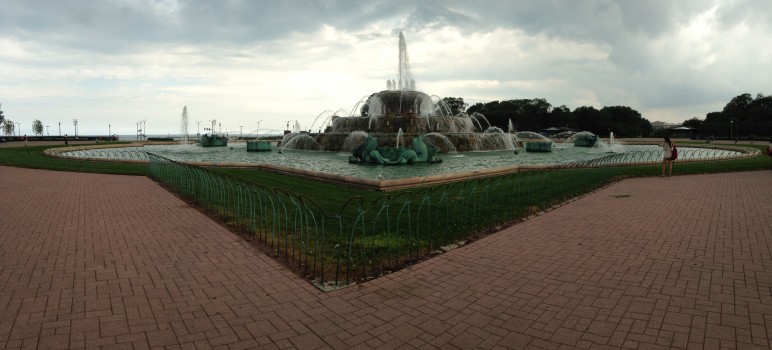Chicago is a great city. It has some of the world’s most exciting and innovative architecture. It has several world-class museums. It is home to blues clubs, professional sports teams in all major sports. And it is home to more than 8,000 acres of parkland, much of which extends parallel to the beautiful Lake Michigan.
I have been to Chicago many times, but while visiting in August I was given a special tour of several parks, courtesy of Gia Biagi, chief of staff for the Chicago Park District. Gia sits on the City Parks Alliance’s national board. In February she was kind enough to come to San Jose to be part of a panel on parks that we conducted at SPUR.
My first question was how Chicago was able to preserve thousands of acres of parkland along the lakefront, where high-rises dominate the nearby streets. The answer: Chicago benefitted from the remarkable vision of architect and urban designer Daniel Burnham. Burnham’s preservation of parkland made Chicago a very livable city.
I should add that Chicago funds its parks in a way that many municipalities across the country do—a park district. The district receives taxes that are separate from the city’s general fund. This allows for stable funding over time and prevents the city’s parks from having to compete for funding with other services and priorities.
Chicago’s mayor appoints all of the park district’s board members, so the parks are very much a priority for each mayor. This has obvious advantages and disadvantages. Mayors change. However, every mayor of Chicago must care about parks because they are responsible for their management, protection and promotion. I was impressed by the huge posters all over town announcing free movies in the parks, where Mayor Rahm Emanuel’s name was clearly emblazoned for all to see.
Gia showed me a newly developed park that is a small marina along Lake Michigan, the 31st Street Harbor. The hope is this park will bring in enough revenue to pay for itself over time. There are nearby event and picnic rental spaces, as well as general lakeside recreational facilities.
The most interesting park we visited was Dunbar Park, a 20-acre site that once was overrun by drug dealers and users. Pediatrician Scott Hanlon moved into the neighborhood and was horrified by the situation.
Dr. Hanlon took it upon himself to organize people. He negotiated with City Hall for help and within a few years Dunbar Park transformed into one of the city’s most active youth sports facilities. Rescuing the park had a positive effect on the entire area, which includes an intersection of several ethnic neighborhoods.
Chicago proves that it is important to have long-term plans for parkland. The city also shows the advantages of having a park district with its own funding and with an active, visible mayor supporting it.


“Burnham’s preservation of parkland made Chicago a very livable city” Chicago has the highest gun murder/violence rate in the USA, despite having its most stringent anti-gun ownership laws. There were 60 shootings in Chicago on the 2014 Memorial Day Weekend alone! That’s livable? So, Jimbo, the bad guys don’t shoot people in the Chicago parks?.